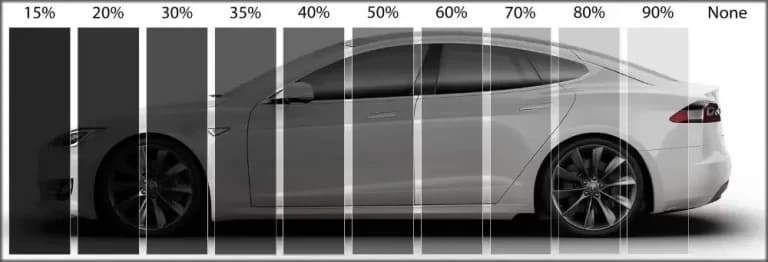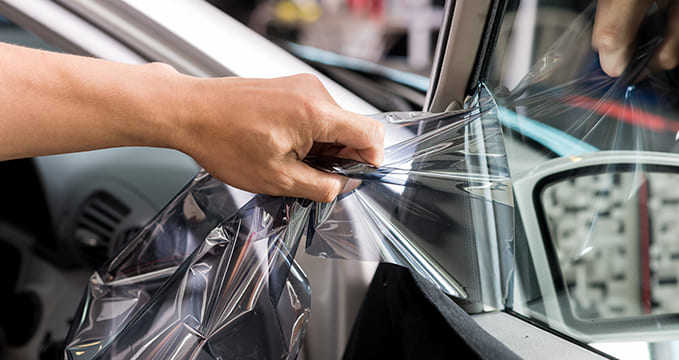Did you know that in the United States, if you happen to own an SUV, van, or truck, the permitted tint percentage for the driver’s window and the front passenger window is only 32%?
In Michigan, people are allowed to tint their windows to any percentage, making it the only state with this permission.
Getting your car windows tinted is a great way to protect yourself from harmful UV rays, keep your car cooler, and enjoy some privacy. That is why it is such a popular modification among car owners.
When it comes to tinting your car’s windows, it can be quite confusing to understand the laws, and this often leads to many misconceptions about what is actually legal. There is a common belief that if you can see through the windows, the tint is considered legal. If you are thinking about getting a tint for your vehicle or if you already have tinted windows, it is important to be aware of the facts to prevent any legal issues.
Let’s look at car tint laws so that you can adhere to the legal regulations while still protecting yourself from harmful UV rays.
Darkness percentages and legal limits
When it comes to car tints, it is important to understand the darkness percentages and legal limits that apply in your state. Every state has its own set of regulations when it comes to the darkness of window tints. These regulations exist to ensure safety on the roads because excessively dark tints can obstruct visibility for both the driver and other road users.
The level of darkness in window tints is measured by the visible light transmission (VLT) percentage. This percentage refers to the amount of visible light allowed to pass through the window. For example, if a state has a legal limit of 50% VLT for front-side windows, it means that at least 50% of visible light must be able to pass through the tint.
If you do receive a traffic ticket for illegal tint, a traffic ticket attorney can help you understand your options and potentially reduce or dismiss the ticket.
Tinting Front Side Windows Misconceptions
Avoid falling for common misconceptions about tinting your front-side windows. One common misconception is that you can tint your front side windows as dark as you want with lighter tints on the back windows. This isn’t the case in most states. Front-side window tint laws are typically stricter than those for the back windows.
The reason is to ensure drivers have maximum visibility, especially in low-light conditions. Another misconception is that you don’t need to worry about front-side window tint if you have a medical exemption. While some states allow darker tints with a valid medical exemption, it’s necessary to check the specific regulations in your state.
Back Window Tinting Regulations
Complying with back window tinting laws ensures you meet state darkness limitations. State restrictions differ, with some allowing deeper tinting on back windows than front windows. California allows the back side and rear windows to have 5% VLT, but New York requires 70%. Avoid fines and legal difficulties by studying your state’s laws.
In VLT limits, some states also restrict using reflective or mirrored tints on back windows. These tints can create glare for other drivers, reducing visibility and causing accidents.
Your back window tint must comply with the darkness limits and any restrictions on reflective tints to guarantee safe driving conditions for yourself and others on the road.
Medical Exemptions and Documentation
State regulations need sufficient paperwork for medical window tint and darkness exemptions. The medical exemption process varies by state but usually includes a doctor’s note explaining the tinted windows’ need. This documentation must be kept in the vehicle as proof of exemption.
Medical exemptions are generally granted for conditions that make individuals sensitive to light or UV rays, such as lupus, melanoma, or other related medical conditions. Failure to provide proper documentation can result in fines or penalties if pulled over by law enforcement.
Medical exemptions are typically not granted for cosmetic reasons or general discomfort with bright sunlight.
Consult your state’s regulations and work with a qualified medical professional to obtain the necessary documentation if you qualify for a medical exemption.
Enforcement and Penalties for Non-Compliance
When law enforcement officers identify vehicles with window tint that don’t comply with state regulations, they may issue fines or penalties for non-compliance. These penalties vary. depending on the severity of the violation and the state laws.
In many states, the driver may receive a citation requiring them to remove or adjust the tint to meet legal standards within a specified timeframe. Failure to address the issue immediately can lead to additional fines or even license suspension.
Repeated violations of window tint laws can result in more severe consequences, such as higher fines, points on your driving record, or even vehicle impoundment. Ignorance of the law isn’t a valid excuse, so you must guarantee your vehicle’s window tint complies with regulations to prevent any enforcement action or penalties for non-compliance.
Conclusion
It is important to understand the car tint laws in your state so that you can avoid legal problems and make sure your vehicle meets safety regulations. Just a reminder: the laws regarding window tint on the front-side windows are usually more strict compared to the back windows. Also, if you have a medical exemption, make sure you have the necessary documentation to support it.
By following these guidelines, you can experience the advantages of window tinting while still staying within the boundaries of the law.




